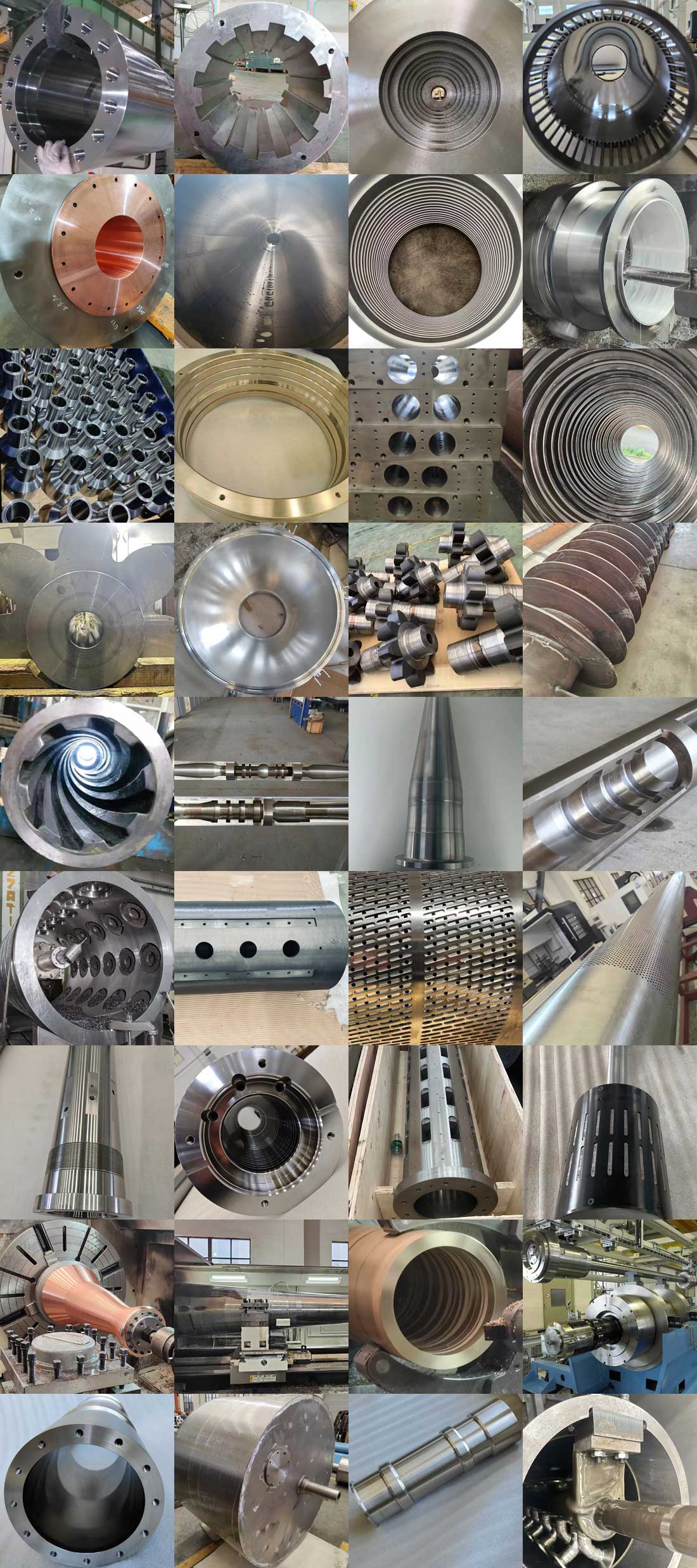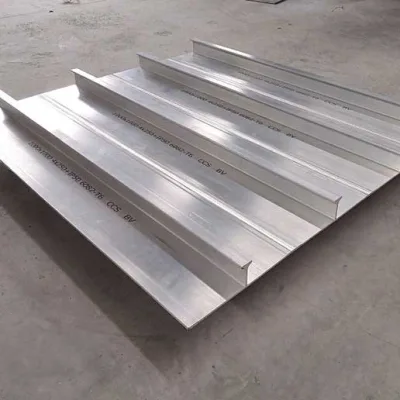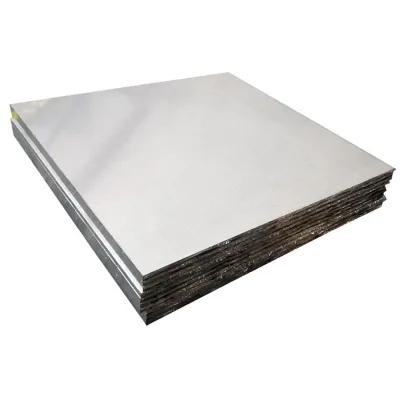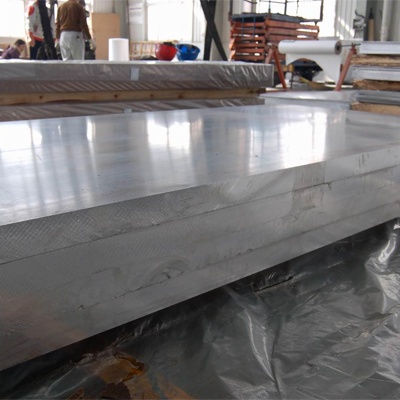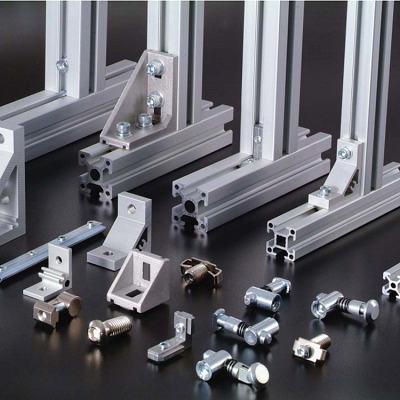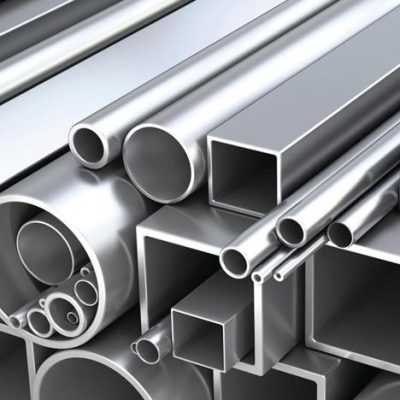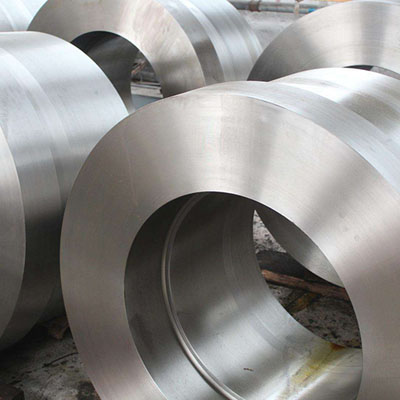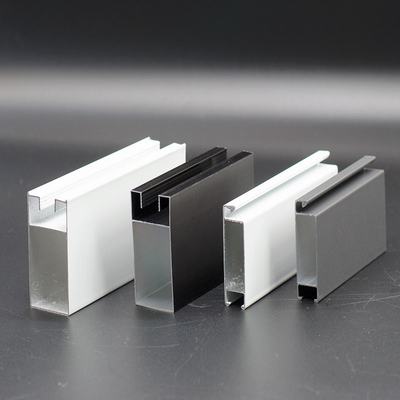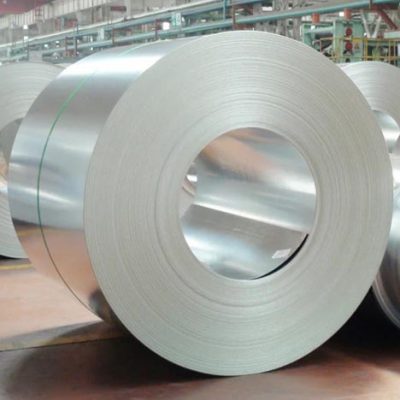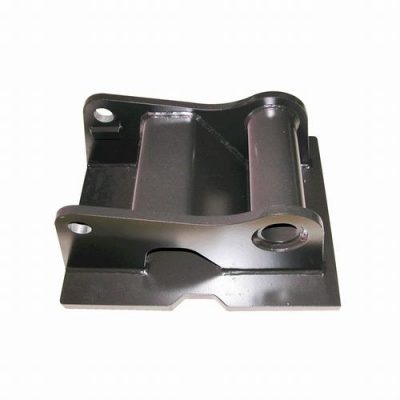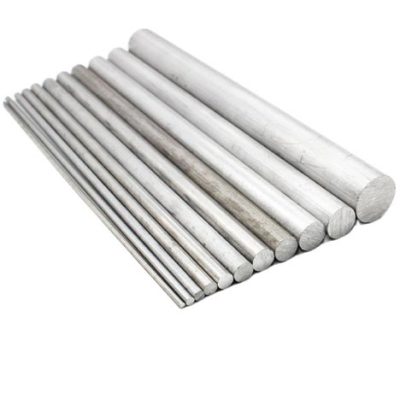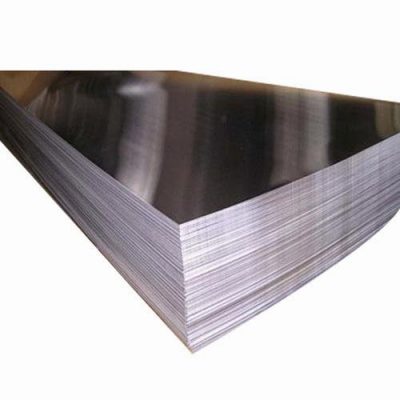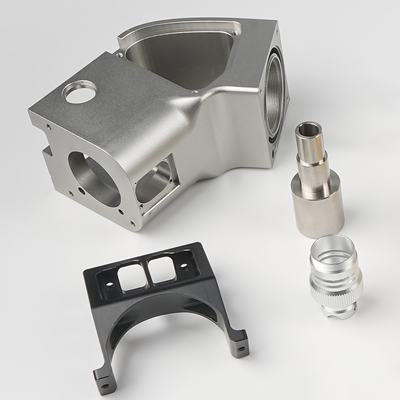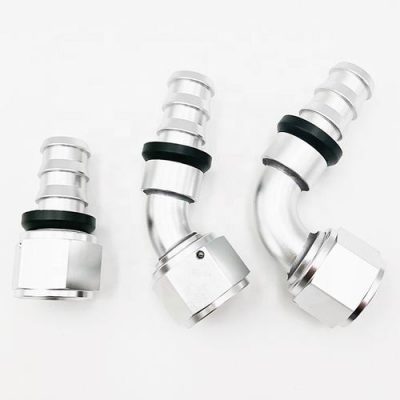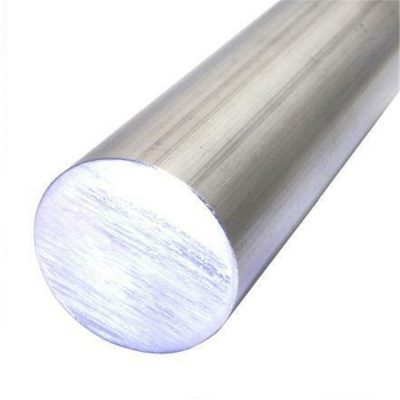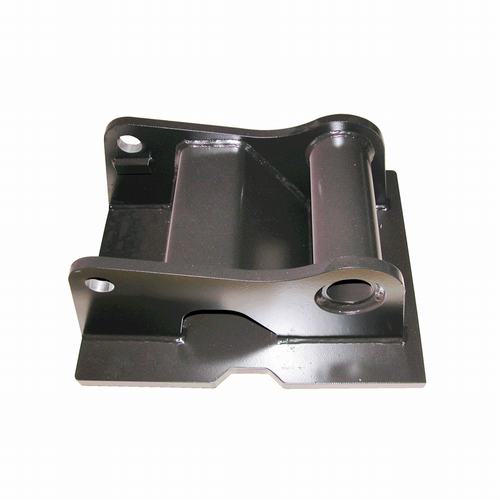

Aluminum Structure Welding
Aluminium and its alloys are used in fabrications because of their low weight, good corrosion resistance and weldability. Although normally low strength, some of the more complex alloys can have mechanical properties equivalent to steels. The various types of aluminium alloy are identified and guidance is given on fabricating components without impairing corrosion and mechanical properties of the material or introducing imperfections into the weld.
Aluminium alloys are ubiquitous in transport applications because they provide engineering materials with good strength-to-weight ratios at reasonable cost. Further applications make use of the corrosion resistance and conductivity (both thermal and electrical) of some alloys. Although normally low strength, some of the more complex alloys can have mechanical properties equivalent to steels. Owing to the many benefits of aluminium alloys offered to industry, there is a need to identify best practices for joining them.
Email: [email protected]
WhatsApp: 0086-18301953841

| NO | Country | China(GB/T) | American AA | Japan JIS | German CORUS | Britain DIN | France NF | Russian ГOCT | India IS | ISO | EN |
| 1 | Grade | 2A01 | BД17/1170 | ||||||||
| 2 | Standards | GB/T3190-1996 | ГOCT4785-1974 | ||||||||
| 3 | 2A06 | Д16/1190 | |||||||||
| 4 | GB/T3190-1996 | ГOCT4785-1974 | |||||||||
| 5 | 2A10 | B65/1165 | |||||||||
| 6 | GB/T3190-1996 | ГOCT4785-1974 | |||||||||
| 7 | 2A11 | 2017/A92017 | A2017 | Д1/1110 | 24534 | AL Cu4MgSi | |||||
| 8 | GB/T3190-1996 | AA/UNS | JIS H4000-1999 JIS H4040-1999 |
ГOCT4785-1974 | IS733-2001 IS737-2001 |
ISO 209.1-1989 | |||||
| 9 | 2A11 | 2024 | A2024 | AICuMg2/3.1355 | 2024(A-U4G1) | Д16/1160 | 24530 | AICu4Mg1 | EN AW-2024/AI Cu4Mg1 | ||
| 10 | GB/T3190-1996 | AA | JIS H4000-1999 JIS H4040-1999 |
DIN 1725-1-1986 | NF A50-411 NF A50-451 |
ГOCT4785-1974 | IS 5902 | ISO 209.1-1989 | EN 573-3-1994 | ||
| 11 | 2A16 | 2219/A92219 | A2219 | Д20/1201 | AICu6Mn | EN AW-2219/AI Cu6Mn | |||||
| 12 | GB/T3190-1996 | AA/UNS | JIS H4000-1999 JIS H4040-1999 |
ГOCT4785-1974 | ISO209.1-1989 | EN 573-3-1994 | |||||
| 13 | 2A70 | 2618/A92618 | A2618 | AK4-1/1141 | |||||||
| 14 | GB/T3190-1996 | AA/UNS | JIS H4140-1988 | ГOCT4785-1974 | |||||||
| 15 | 2A80 | A2N01 | AK4/1140 | ||||||||
| 16 | GB/T3190-1996 | JIS H4140-1988 | ГOCT4785-1974 | ||||||||
| 17 | 2A90 | 2018/A92018 | A2018 | AK2/1120 | |||||||
| 18 | GB/T3190-1996 | AA/UNS | JIS H4140-1988 | ГOCT4785-1974 | |||||||
| 19 | 2011 | 2011/A92011 | A2011 | AICuBiPb/3.1655 | 2011(FC1) | 2011(A-U5PbBi) | ~Д1/1110 | AI Cu6BiPb | EN AW-2011/AI Cu6BiPb | ||
| 20 | GB/T3190-1996 | AA/UNS | JIS H4040-1999 JIS H4080-1999 |
DIN 1725-1-1986 | BS 1470-1988 | NF 50-411 | ГOCT4785-1974 | ISO 209.1-1989 | EN 573-3-1994 | ||
| 21 | 2014 | 2014/A92014 | A2014 | AICuSiMn/3.1655 | 2014(H15) | 2014(A-U4SG) | AK8/1380 | 24345 | AI Cu4SiMg | EN AW-2014/AI Cu4SiMg | |
| 22 | GB/T3190-1996 | AA/UNS | JIS H4000-1999 JIS H4040-1999 |
DIN 1725-1-1986 | BS 14710-1988 | NF A50-411 NF A50-451 |
ГOCT4785-1974 | IS733-2001 IS737-2001 |
ISO209.1-1989 | EN 573-3-1994 | |
| 23 | 2014A | 2014A | A2014A | AI Cu4SiMg(A) | EN AW-2014A/AI Cu4SiMg(A) | ||||||
| 24 | GB/T3190-1996 | AA | JIS H4100-1999 JIS H4040-1999 |
ISO 209.1-1989 | EN 573-3-1994 | ||||||
| 25 | 2017A | 2017A/A92017 | A2017A | AICuMg1/3.1325 | 2017A(A-U4G) | AK21/1120 | 24534 | AI Cu4MgSi(A) | EN AW-2017A/AI Cu4MgSi(A) | ||
| 26 | GB/T3190-1996 | AA/UNS | JIS H4040-1999 JIS H4080-1999 |
DIN 1725-1-1986 | NF A50-411 NF A50-451 |
ГOCT4785-1974 | IS733-2001 IS737-2001 |
ISO 209.1-1989 | EN 573-3-1994 | ||
| 27 | 2024 | 2024/A92024 | A2024 | AICuMg2/3.1355 | 2024(A-U4G1) | Д16/1160 | 24530 | AI Cu4Mg1 | EN AW-2024/AI Cu4Mg1 | ||
| 28 | GB/T3190-1996 | AA/UNS | JIS H4100-1999 JIS H4040-1999 |
DIN 1725-1-1986 | NF A50-411 NF A50-451 |
ГOCT47785-1974 | ГOCT47785-1974 | IS 739-2001 | EN 573-3-1994 | ||
| 29 | 2124 | 2124/A92124 | Д16Л/1161 | EN AW-2124/AI Cu4Mg1(A) | |||||||
| 30 | GB/T3190-1996 | AA/UNS | ГOCT4785-1974 | EN 573-3-1994 | |||||||
| 31 | 2117 | 2117/A92117 | A2117 | AICu2.5Mg0.5/3.1305 | 2117(A-U2G) | AI Cu2.5Mg | EN AW-2117/AI Cu2.5Mg | ||||
| 32 | GB/T3190-1996 | AA/UNS | JIS H4040-1999 | DIN 1725-1-1986 | NFA50-451 | ISO 209.1-1989 | EN 573-3-1994 | ||||
| 33 | 2214 | 2214/A92214 | ~ AK8/1380 | EN AW-2214/AI Cu4SiMg(B) | |||||||
| 34 | GB/T3190-1996 | AA/UNS | ГOCT4785-1974 | EN 573-3-1994 | |||||||
| 35 | 2218 | 2218/A92218 | A2218 | 2218(A-U4N) | |||||||
| 36 | GB/T3190-1996 | AA/UNS | JIS H4140-1988 | NF 50-411 | |||||||
| 37 | 2618 | 2618/A92618 | A2618 | AK4-1/1141 | |||||||
| 38 | GB/T 3190-1996 | AA/UNS | JIS H4140-1988 | ГOCT 4785-1974 | |||||||
| 39 | 2001/A92001 | 2001(A-U6MT) | EN AW-2001/AI Cu5.5MgMn | ||||||||
| 40 | AA/UNS | NF A50-101 | EN 573-3-1994 | ||||||||
| 41 | 2007/A92007 | AICuMgPb/3.1645 | EN AW-2007/AI Cu4PbMgMn | ||||||||
| 42 | AA/UNS | DIN 1725-1-1986 | EN 573-3-1994 | ||||||||
| 43 | 5A02(LF2) | 5052/A95052 | A5052 | AIMg2.5/3.3523 | 5052(NS4) | 5052(A-G2.5C) | AMr2/1520 | AI Mg2.5 | EN AW-5052/AI Mg2.5 | ||
| 44 | GB/T 3190-1996 | AA/UNS | JIS H4040-1999 JIS H4100-1988 |
DIN 1725.1-1986/W-Nr. | BS 1470-1988 | NF A50-411 NF A50-451 |
ГOCT 4785-1974 | ISO 209.1-1989 | EN 573-3-1994 | ||
| 45 | 5A03(LF3) | 5154/A95154 | A5154 | 5154A(NS5) | 5154A(A-G3C) | AMr3/1530 | AI Mg3.5 | EN AW-5154A/AI Mg3.5(A) | |||
| 46 | GB/T 3190-1996 | AA/UNS | JIS H4000-1999 | BS 1470-1988 | NF A50-411 NF A50-451 |
ГOCT 4785-1974 | ISO 209.1-1989 | EN 573-3-1994 | |||
| 47 | 5A05(LF5) | 5456/A95456 | ~A5056 | AIMg5/3.3555 | 5056(A56S) | ~AMr5/1550 | AI Mg5Mn1 | ~EN AW-5019/AI Mg5 | |||
| 48 | GB/T 3190-1996 | AA/UNS | JIS H4040-1999 JIS H4080-1999 |
DIN 1725.1-1986/W-Nr. | BS 1470-1988 | ГOCT 4785-1974 | ISO 209.1-1989 | EN 573-3-1994 | |||
| 49 | 5A06(LF6) | A5005 | AMr6/1560 | ||||||||
| 50 | GB/T 3190-1996 | JIS H4040-1999 JIS H4100-1988 |
ГOCT 4785-1974 | ||||||||
| 51 | 5005 | 5005/A95005 | A5005 | 5005(N41) | 5005(A-G0.6) | AMr1/1510 | 51000-A | AI Mg1(B) | EN AW-5005/AI Mg1(B) | ||
| 52 | GB/T 3190-1996 | AA/UNS | JIS H4040-1999 JIS H4100-1988 |
BS 1470-1988 | NF A50-411 NF A50-451 |
ГOCT 4785-1974 | IS733-2001 IS737-2001 |
ISO 209.1-1989 | EN 573-3-1994 | ||
| 53 | 5019 | 5019/A95019 | AIMg5/3.3555 | 5019(NB6) | AMr5/1550 | EN AW-5019/AI Mg5 | |||||
| 54 | GB/T 3190-1996 | AA/UNS | DIN 1725.1-1986/W-Nr. | BS 1470-1988 | ГOCT 4785-1974 | EN 573-3-1994 | |||||
| 55 | 5050 | 5050/A95050 | AIMg1.5/3.3316 | 5050(2L44) | 5050(A-G1.5) | AMr1/1510 | 51000-B | AI Mg1.5(C) | EN AW-5050/AI Mg1.5(C) | ||
| 56 | GB/T 3190-1996 | AA/UNS | DIN 1725.1-1986/W-N | BS 1470-1988 | NF A50-451 | ГOCT 4785-1974 | IS733-2001 IS737-2001 |
ISO 209.1-1989 | EN 573-3-1994 | ||
| 57 | 5052 | 5052/A95052 | A5052 | AIMg2.5/3.3523 | 5052(2155) | 5052(A-G2.5C) | AMr2/1520 | AI Mg2.5 | EN AW-5052/AI Mg2.5 | ||
| 58 | GB/T 3190-1996 | AA/UNS | JIS H4000-1988 | DIN 1725.1-1986/W-Nr. | BS "L" | NF A50-411 NF A50-451 |
ГOCT 4785-1974 | ISO 209.1-1989 | EN 573-3-1994 | ||
| 59 | 5056(LF5-1) | 5056A95056 | A5056 | AIMg5/3.3555 | 5056(NG6/2L58) | AMr5/1550 | AI Mg5Cr | EN AW-5056A/AI Mg5 | |||
| 60 | GB/T 3190-1996 | AA/UNS | JIS H4040-1999 JIS H4080-1999 |
DIN 1725.1-1986/W-Nr. | BS 1470-1988/BS "L" | ГOCT 4785-1974 | ISO 209.1-1989 | EN 573-3-1994 | |||
| 61 | 5083 | 5083/A95083 | A5083 | AIMg4.5Mn/3.3547 | 5083(NT8) | 5083(A-G4.5MC) | 54300 | AI Mg4.5Mn0.7 | EN AW-5083/AI Mg4.5Mn0.7 | ||
| 62 | GB/T 3190-1996 | AA/UNS | JIS H4040-1999 JIS H4080-1999 |
DIN 1725.1-1986/W-Nr. | BS 1470-1988 | NF A50-411 NF A50-451 |
IS733-2001 IS737-2001 |
ISO 209.1-1989 | EN 573-3-1994 | ||
| 63 | 5086 | 5086/A95086 | A5086 | AIMg4Mn/3.3545 | 5086(A-G4MC) | AMr4/1540 | AI Mg4 | EN AW-5086/AI Mg4 | |||
| 64 | GB/T 3190-1996 | AA/UNS | JIS H4000-1999 JIS H4080-1999 |
DIN 1725.1-1986/W-Nr. | NF A50-411 NF A50-451 |
ГOCT 4785-1974 | ISO 209.1-1989 | EN 573-3-1994 | |||
| 65 | 5154 | 5154/A95154 | A5154 | 5154(A-G3C) | AMr3/1530 | AI Mg3.5 | |||||
| 66 | GB/T 3190-1996 | AA/UNS | JIS H4040-1999 JIS H4100-1988 |
NF A50-411 NF A50-451 |
ГOCT 4785-1974 | ISO 209.1-1989 | |||||
| 67 | 5154A | 5154A | 5154A(NS5) | 53000 | AI Mg3.5(A) | EN AW-5154A/AI Mg3.5(A) | |||||
| 68 | GB/T 3190-1996 | AA | BS 1470-1988 | IS733-2001 IS737-2001 |
ISO 209.1-1989 | EN 573-3-1994 | |||||
| 69 | 5182 | 5182/A95182 | A5182 | AIMg5Mn/3.3549 | 5182(A-G4.5M) | EN AW-5182/AI Mg4.5Mn0.4 | |||||
| 70 | GB/T 3190-1996 | AA/UNS | JIS H4000-1999 | DIN 1725.1-1986/W-Nr. | NF A50-481 | EN 573-3-1994 | |||||
| 71 | 5183 | 5183/A95183 | A5183 | AIMg4.5Mn/3.3547 | 5183(NG8) | (~A-G4.5MC) | AMr4.5 | AI Mg4.5Mn0.7(A) | EN AW-5183/AI Mg4.5Mn0.7(A) | ||
| 72 | 中国(GB/T) | 美国AA | 日本JIS | 德国CORUS | 英国DIN | 法国NF | 俄罗斯ГOCT | 印度IS | 国际标准化组织ISO | 欧洲标准 EN | |
| 73 | 5251 | 5251/A95251 | AIMg2Mn0.3/3.3525 |
251(N4/3L80)
5 |
5251(A-G2M) | AMr2/1520 | 52000 | AI Mg2 | EN AW-5251/AI Mg2 | ||
| 74 | GB/T 3190-1996 | AA/UNS | DIN 1725.1-1986/W-Nr. | BS 1470-1988/BS "L" | NF A50-411 NF A50-451 |
ГOCT 4785-1974 | IS733-2001 IS737-2001 |
ISO 209.1-1989 | EN 573-3-1994 | ||
| 75 | 5356 | 5356/A95356 | A5356 | AI Mg5Cr(A) | EN AW-5356/AI Mg5Cr(A) | ||||||
| 76 | GB/T 3190-1996 | AA/UNS | JIS Z3232-1986 | ISO 209.1-1989 | EN 573-3-1994 | ||||||
| 77 | 5454 | 5454/A95454 | A5454 | AIMg2.7Mn/3.3537 | 5454(N51) | 5454(A-G2.5MC) | AI Mg3Mn | EN AW-5454/AI Mg3Mn | |||
| 78 | GB/T 3190-1996 | AA/UNS | JIS H4040-1999 JIS H4100-1999 |
DIN 1725.1-1986/W-Nr. | BS 1470-1988 | NF A50-411 NF A50-451 |
ISO 209.1-1989 | EN 573-3-1994 | |||
| 79 | 5456 | 5456/A5456 | ~AMr5/1550 | AI Mg5Mn1 | ~EN AW-5456A/AI Mg5Mn1(A) | ||||||
| 80 | GB/T 3190-1996 | AA/UNS | ГOCT 4785-1974 | ISO 209.1-1989 | EN 573-3-1994 | ||||||
| 81 | 5554 | 5554/A95554 | A5554 | 5554(N52) | AI Mg3Mn(A) | EN AW-5554/AI Mg3Mn(A) | |||||
| 82 | GB/T 3190-1996 | AA/UNS | JIS H4160-1994 | BS 1470-1988 | ISO 209.1-1989 | EN 573-3-1994 | |||||
| 83 | 5049/A95049 | AIMg2Mn0.8/3.3527 | 5049 | EN AW-5049/AI Mg2Mn0.8 | |||||||
| 84 | AA/UNS | DIN 1725.1-1986/W-Nr. | NF A50-451 | EN 573-3-1994 | |||||||
| 85 | 5556/A95556 | A5556 | 5556(N61) | 55380 | EN AW-5556A/AI Mg5Mn | ||||||
| 86 | AA/UNS | JIS H33263-1992 | BS 1470-1988 | IS733-2001 IS737-2001 |
EN 573-3-1994 | ||||||
| 87 | 5654/A95654 | A5654 | EN AW-5654/AI Mg3.5Cr | ||||||||
| 88 | AA/UNS | JIS H4000-1988 | EN 573-3-1994 | ||||||||
| 89 | 6A02(LD2) | ~6151 | A6165 | AISiMgCu/3.3214 | AB/1340 | ||||||
| 90 | GB/T 3190-1996 | AA | JIS H4040-1999 JIS H4100-1999 |
DIN 1725.1-1986/W-Nr. | ГOCT 4785-1974 | ||||||
| 91 | 6005 | 6005/A96005 | AI SiMg | EN AW-6005/AI SiMg | |||||||
| 92 | GB/T 3190-1996 | AA/UNS | ISO 209.1-1989 | EN 573-3-1994 | |||||||
| 93 | 6005A | 6005A | AIMgSi0.7/3.3210 | AI SiMg(A) | EN AW-6005A/AI SiMg(A) | ||||||
| 94 | GB/T 3190-1996 | AA | DIN 1725.1-1986/W-Nr. | ISO 209.1-1989 | EN 573-3-1994 | ||||||
| 95 | 6082 | 6082/A96082 | AIMgSi1/3.2315 | 6082(A-SGM0.7) | AД35/1350 | 64430 | AI SiMgMn | EN AW-6082/AI SiMgMn | |||
| 96 | GB/T 3190-1996 | AA/UNS | DIN 1725.1-1986/W-Nr. | NF A50-411 NF A50-451 |
ГOCT 4785-1974 | IS733-2001 IS737-2001 |
ISO 209.1-1989 | EN 573-3-1994 | |||
| 97 | 6351 | 6351/A96351 | AB/1340 | AI SiMg0.5Mn | EN AW-6351/AI SiMg0.5Mn | ||||||
| 98 | GB/T 3190-1996 | AA/UNS | ГOCT 4785-1974 | ISO 209.1-1989 | EN 573-3-1994 | ||||||
| 99 | 6060 | 6060/A96060 | AIMgSi0.5/3.3206 | 6060(A-GS) | AI MgSi | EN AW-6060/AI MgSi | |||||
| 100 | GB/T 3190-1996 | AA/UNS | DIN 1725.1-1986/W-Nr. | NF A50-411 | ISO 209.1-1989 | EN 573-3-1994 | |||||
| 101 | 6061(LD30) | 6061/A96061 | A6061 | AIMgSi1Cu/3.3211 | 6061(N20/H20) | 6061(A-GSUC) | AД33/1330 | 65032 | AI Mg1SiCu | EN AW-6061/AI Mg1SiCu | |
| 102 | GB/T 3190-1996 | AA/UNS | JIS H4040-1999 JIS H4000-1999 |
DIN 1725.1-1986/W-Nr. | BS 1470-1988 | NF A50-411 NF A50-451 |
ГOCT 4785-1974 | IS733-2001 IS737-2001 |
ISO 209.1-1989 | EN 573-3-1994 | |
| 103 | 6063(LD31) | 6063/A96063 | A6063 | 6063(HT9) | (~A-GS) | AД31/1310 | 63400 | AI Mg0.7Si | EN AW-6063/AI Mg0.7Si | ||
| 104 | GB/T 3190-1996 | AA/UNS | JIS H4040-1999 JIS H4100-1999 |
BS 1470-1988 | NF A50-411 NF A50-451 |
ГOCT 4785-1974 | IS733-2001 IS737-2001 |
ISO 209.1-1989 | EN 573-3-1994 | ||
| 105 | 6063A | 6063A | AI Mg0.7Si(A) | EN AW-6063A/AI Mg0.7Si(A) | |||||||
| 106 | GB/T 3190-1996 | AA | ISO 209.1-1989 | EN 573-3-1994 | |||||||
| 107 | 6101 | 6101/A96101 | A6101 | ~E-AIMgSi0.5/3.3207 | E-AI MgSi | EN AW-6101/E-AI MgSi | |||||
| 108 | GB/T 3190-1996 | AA/UNS | JIS H4180-1990 | DIN 1725.1-1986/W-Nr. | ISO 209.1-1989 | EN 573-3-1994 | |||||
| 109 | 6101A | 6101A | 6101A(E91E) | E-AI MgSi(A) | EN AW-6101A/E-AI MgSi(A) | ||||||
| 110 | GB/T 3190-1996 | AA | BS 2898-1988 | ISO 209.1-1989 | EN 573-3-1994 | ||||||
| 111 | 6081/A96081 | 6081(A-SGM0.3) | EN AW-6081/AI Si0.9MgMn | ||||||||
| 112 | AA/UNS | NF A50-451 | EN 573-3-1994 | ||||||||
| 113 | 6262/A96262 | 6262 | AI Mg1SiPb | EN AW-6262/AI Mg1SiPb | |||||||
| 114 | AA/UNS | BS 2898-1988 | ISO 209.1-1989 | EN 573-3-1994 | |||||||
| 115 | 6463/A96463 | 6463(91E/E6) | EN AW-6463/AI Mg0.7Si(B) | ||||||||
| 116 | AA/UNS | BS 1474-1988 | EN 573-3-1994 | ||||||||
| 117 | 7A01(LB1) | 7072/A97072 | A7072 | AI Zn1/3.4415 | Aц1 | EN AW-7072/AI Zn1 | |||||
| 118 | GB/T 3190-1996 | AA/UNS | JIS H4000-1999 | DIN 1725.1-1986/W-Nr. | ГOCT 4785-1974 | EN 573-3-1994 | |||||
| 119 | 7A03(LC3) | B94/1940 | |||||||||
| 120 | GB/T 3190-1996 | ГOCT 4785-1974 | |||||||||
| 121 | 7A04(LC4) | 7010/A97010 | 7010 | B95/1950 | AI Zn6MgCu | EN AW-7010/AI Zn6MgCu | |||||
| 122 | GB/T 3190-1996 | AA/UNS | BS 1470-1988 | ГOCT 4785-1974 | ISO 209.1-1989 | EN 573-3-1994 | |||||
| 123 | 7A05(705) | 7005/A97005 | A7N01 | AцM | 74530 | AI Zn4.5Mg1.5Mn | EN AW-7005/AI Zn4.5Mg1.5Mn | ||||
| 124 | GB/T 3190-1996 | AA/UNS | JIS H4080-1999 JIS H4000-1999 |
ГOCT 4785-1974 | IS733-2001 IS737-2001 |
ISO 209.1-1989 | EN 573-3-1994 | ||||
| 125 | 7A10(LC10) | ~7079 | |||||||||
| 126 | GB/T 3190-1996 | AA | |||||||||
| 127 | 7A52(LC52\5210) | ~7017/A97017 | ≈1925 | ||||||||
| 128 | GB/T 3190-1996 | AA/UNS | ГOCT 4785-1974 | ||||||||
| 129 | 7003(LC12) | 7003/A97003 | A7003 | EN AW-7003/AI Zn6Mg0.8Zr | |||||||
| 130 | GB/T 3190-1996 | AA/UNS | JIS H4040-1999 JIS H4100-1999 |
EN 573-3-1994 | |||||||
| 131 | 7005 | 7005/A97005 | A7N01 | 74530 | AI Zn4.5Mg1.5Mn | EN AW-7005/AI Zn4.5Mg1.5Mn | |||||
| 132 | GB/T 3190-1996 | AA/UNS | JIS H4080-1999 JIS H4000-1999 |
IS733-2001 IS737-2001 |
ISO 209.1-1989 | EN 573-3-1994 | |||||
| 133 | 7020 | 7020/A9020 | AIZn4.5Mg1/3.4335 | 7020(A-Z5G) | ~1925C | AI Zn4.5Mg1 | EN AW-7020/AI Zn4.5Mg1 | ||||
| 134 | GB/T 3190-1996 | AA/UNS | DIN 1725.1-1986/W-Nr. | NF A50-411 NF A50-451 |
ГOCT 4785-1974 | ISO 209.1-1989 | EN 573-3-1994 | ||||
| 135 | 7022 | 7022/A97022 | AIZn1MgCu0.5/3.4345 | EN AW-7022/AI Zn5Mg3Cu | |||||||
| 136 | GB/T 3190-1996 | AA/UNS | DIN 1725.1-1986/W-Nr. | EN 573-3-1994 | |||||||
| 137 | 7050 | 7050/A97050 | A7050 | AI Zn6CuMgZr | EN AW-7050/AI Zn6CuMgZr | ||||||
| 138 | GB/T 3190-1996 | AA/UNS | JIS H4080-1999 JIS H4000-1999 |
DIN 1725.1-1986/W-Nr. | BS 1470-1988 | NF A50-411 NF A50-451 |
ГOCT 4785-1974 | IS733-2001 IS737-2001 |
ISO 209.1-1989 | EN 573-3-1994 | |
| 139 | 7475 | 7475/A9475 | AI Zn5.5MgCu(A) | EN AW-7475/AI Zn5.5MgCu(A) | |||||||
| 140 | GB/T 3190-1996 | AA/UNS | ISO 209.1-1989 | EN 573-3-1994 | |||||||
| 141 | 7010 | AI Zn6MgCu | EN AW-7010/AI Zn6MgCu | ||||||||
| 142 | AA | ISO 209.1-1989 | EN 573-3-1994 | ||||||||
| 143 | 7012 | EN AW-7012/AI Zn6Mg2Cu | |||||||||
| 144 | AA | EN 573-3-1994 | |||||||||
| 145 | 7049A | 7049A(A-Z8GU) | AI Zn8MgCu | EN AW-7049A/AI Zn8MgCu | |||||||
| 146 | AA | NF A50-411 NF A50-451 |
ISO 209.1-1989 | EN 573-3-1994 | |||||||
| 147 | 7178 | AI Zn7MgCu | EN AW-7178/AI Zn7MgCu | ||||||||
| 148 | AA | ISO 209.1-1989 | EN 573-3-1994 |
| Alloy Designation | Chemical Designation | Classification | Filler | Application |
|---|---|---|---|---|
| EN AW-1080A | EN AW-Al 99.8(A) | NHT | R-1080A | Chemical plant |
| EN AW-3103 | EN AW-Al Mn1 | NHT | R-3103 | Buildings, heat exchangers |
| EN AW-4043A | EN AW-Al Si5(A) | - | - | Filler wire/rod |
| EN AW-5083 | EN AW-Al Mg4.5Mn0.7 | NHT | R-5556A | Ships, rail wagons, bridges |
| EN AW-5251 | EN AW-Al Mg2Mn0.3 | NHT | R-5356 | Road vehicles, marine |
| EN AW-5356 | EN AW-Al Mg5Cr(A) | - | - | Filler wire/rod |
| EN AW-5556A | EN AW-Al Mg5Mn | - | - | Filer wire/rod |
| EN AW-6061 | EN AW-Al Mg1SiCu | HT | R-4043A R-5356 |
Structural, pipes |
| EN AW-7020 | EN AW-Al Zn4.5Mg1 | HT | R-5556A | Structural, transport |
| HT = Heat treatable, NHT = Non Heat treatable | ||||
Arc Welding
Arc welding is commonly used for joining aluminium alloys. Most of the wrought grades in the 1xxx, 3xxx, 5xxx, 6xxx and medium strength 7xxx (e.g. 7020) series can be fusion welded with arc-based processes. The 5xxx series alloys, in particular, have excellent weldability. High strength alloys (e.g. 7010 and 7050) and most of the 2xxx series are not recommended for fusion welding because they are prone to liquation and solidification cracking.
- Can you weld aluminium with MIG? MIG welding can be successfully used to join aluminium alloys. The process is best suited for thinner gauges of material, such as aluminium sheet, because the amount of heat required is less when compared to thicker plates. Pure Argon is the preferred shielding gas for this process and the welding wire/rod used should be compositionally as similar as possible to the parts being welded
- Can you weld aluminium with TIG? TIG welding can also be used for joining aluminium alloys. Owing to the high thermal conductivity of bulk aluminium, the TIG process enables sufficient generation of heat to keep the weld region hot enough to create a weld pool. TIG welding can be used to join thick and thin sections. Similarly to MIG welding, pure argon is the preferred shielding gas and the welding wire/rod used should be compositionally similar to the parts being welded.
Laser Welding
Like other fusion based processes, including arc welding, laser beams can be used to weld many series of aluminium alloys. Laser welding is typically a faster welding process compared to other welding processes due to its high power density at the material’s surface. Keyhole laser welding is capable of producing high aspect ratio welds (narrow weld width: large weld depth), resulting in narrow heat-affected zones. Laser beam welding can be used with crack sensitive materials, such as the 6000 series of aluminum alloys when combined with an appropriate filler material such as 4032 or 4047 aluminum alloys. Sheilding gases used are selected dependent on the aluminium grade to be joined.
Electron Beam Welding
Similarly to laser welding, electron beams are good at producing fast welds and small weld pools. Electron beams are also better at producing welds in very thick sections of aluminium. Unlike other fusion-based processes, electron beam welding occurs in a vacuum, meaning that a shielding gas is not required, resulting in very pure welds.
Proper filler metal selection (filler wire or filler rod), carefully selected welding parameters and joint design are essential in order to minimise the risk of hot cracking in aluminium alloys when using fusion welding processes like arc, electron beam and laser welding.
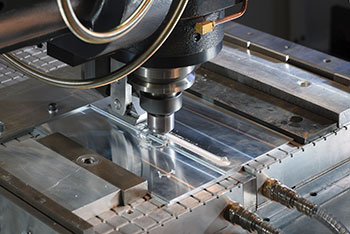
Friction Welding
Friction welding is a solid-state joining process (i.e. no melting of the metal occurs), which is particularly suitable for joining aluminium alloys. Friction welding is capable of joining all series of aluminium alloys, including 2xxx and 7xxx, which are difficult with fusion-based processes. Moreover, owing to the nature of the solid-state process, the need for shielding gas is eliminated and superior mechanical performance of the weld region is obtained when compared to fusion welding processes. There are several friction processing variants:
- Friction stir welding (FSW). FSW was developed at TWI Ltd in 1991. FSW works by using a non-consumable tool, which is rotated and plunged into the interface of two workpieces. The tool is then moved through the interface and the frictional heat causes the material to heat and soften. The rotating tool then mechanically mixes the softened material to produce a weld. The process is typically used for joining aluminium sheet/plate material
- Refill friction stir spot welding (RFSSW). RFSSW is a development of the FSW process and is used as a spot welding technique to replace rivets in aluminium sheet metal applications
- Linear friction welding (LFW). LFW works by oscillating one workpiece relative to another while under a large compressive force. The friction between the oscillating surfaces produces heat, causing the interface material to plasticise. The plasticised material is then expelled from the interface, causing the workpieces to shorten (burn-off) in the direction of the compressive force. During the burn-off the interface contaminants, such as oxides and foreign particles, which can affect the properties and possibly the service life of a weld, are expelled into the flash. Once free from contaminants, pure metal to metal contact occurs, resulting in a weld. The process is used for joining bulk aluminium components to produce near-net-shapes
- Rotary friction welding (RFW). RFW is similar to LFW with the exception that the bulk aluminium parts are cylindrical and rotated to generate frictional heat instead of linearly oscillated

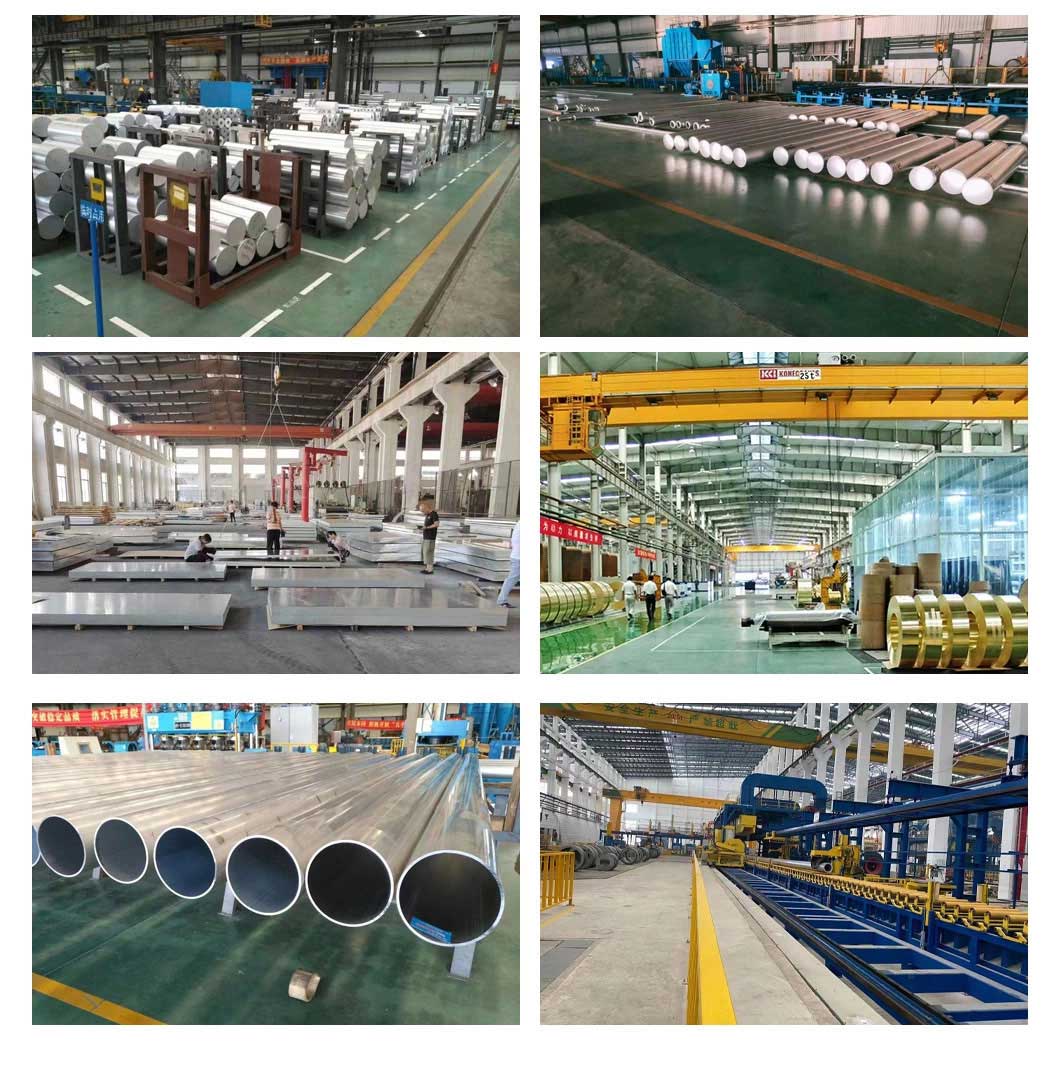
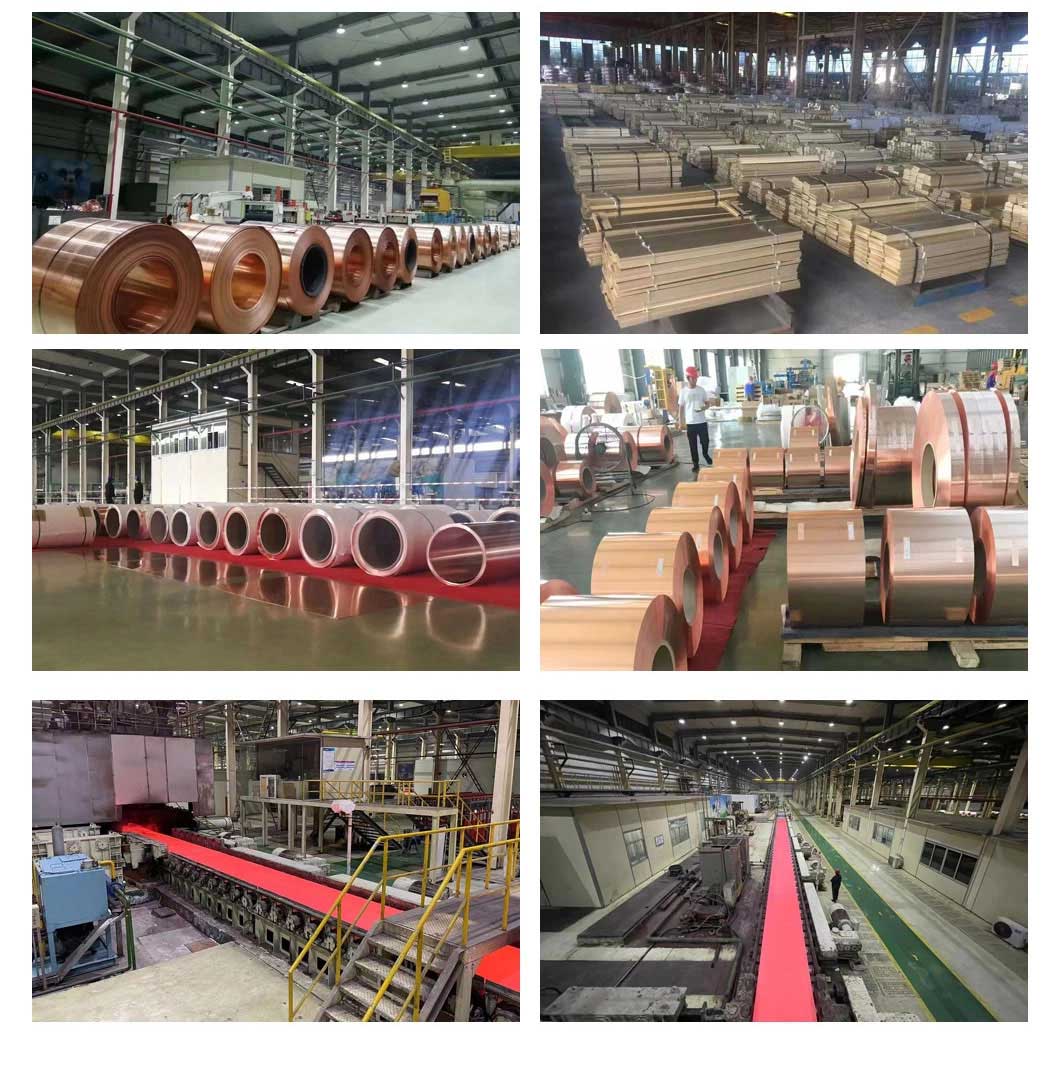
We also provide CNC precision machining services for our clients, covering industries such as energy, petrochemicals, steel, engineering machinery, plastics, prevention and control, hydraulics, healthcare, and food. Please feel free to send us drawings for inquiries.
